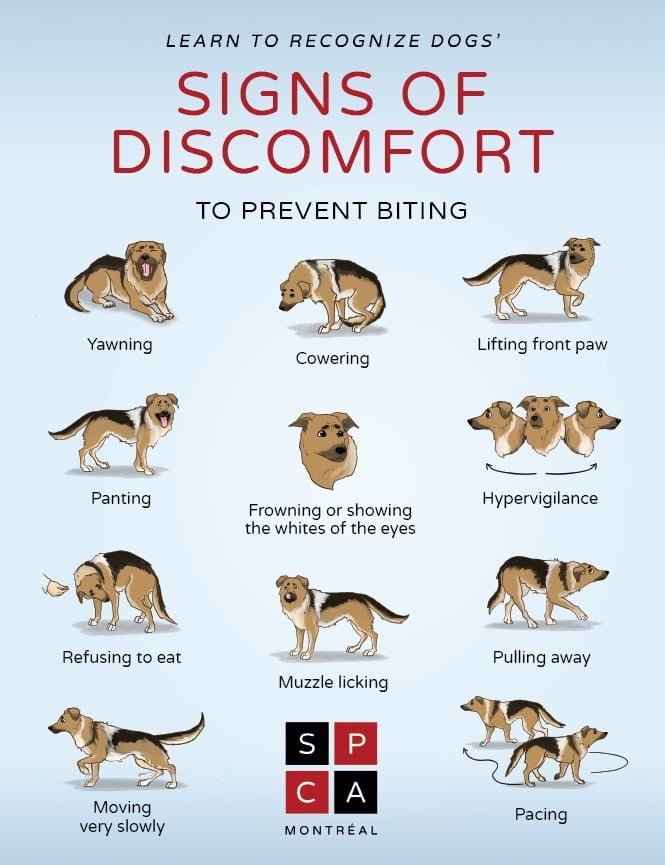Dogs have a limited number of ways to express the discomfort they may feel in various situations. Unlike humans who have a wide range expression, dogs communicate essentially through body language. Unfortunately, humans are often unfamiliar with this language or even ignore it.
Don’t wait for a dog to growl or bark before you listen! By learning to recognize canine body language, we realize that dogs are constantly communicating through their postures, looks and actions. When we know to read these signs, we can adjust our interactions and reduce the discomfort our animal experiences in certain situations. This will ensure their well-being and avoid bites.”
Here are some signals that, once “decoded,” will help you better understand your canine companions when they feel uncomfortable:

Slightly rounded back: You dog’s back legs are slightly bent so that their hind end is lower than their front. Their ears point backwards and their tail is generally low.
Very rounded back: Your dog’s weight is thrown backwards OR they are holding themselves very low to the ground. Their legs are bent and their head, low. Their ears point backwards and their tail is between their legs.
Licking their muzzle: Your dog is constantly licking their muzzle.
Panting: Your dog is breathing rapidly with their tongue out and seems to be hyperventilating for no obvious reason (i.e., they haven’t been running or it isn’t particularly hot out).
Moving excessively: Your dog is running around in circles or pacing quickly and you’re not sure why.
Yawning: Your dog is yawning for no apparent reason.
Refusing to eat: Your dog isn’t eating and is even refusing the treats they normally enjoy.
Moving very slowly: Your dog seems lethargic and is moving very slowly.
Scowling: Your dog looks like they’re frowning, with wrinkles on their forehead.
Being hypervigilant: Your dog is jumpy and reacting to every noise or movement. They are alert and unable to relax. If they are very tired, they’ll nod off and wake up with a start, as if they are afraid to have missed something.
Pulling away: Your dog will shy away from a situation and won’t try to go back.
Raised foreleg: Your dog lifts one or the other foreleg, which is pointed toward the body.
Whale eyes: Your dog looks away, showing the whites of their eyes. This sign of stress may be more difficult to observe in some dogs who have bulgy eyes, but it you’ll notice it if you compare to what the white of their eyes usually looks like.
Children and adults must listen to dogs’ body language and respect their way of communicating. By correctly interpreting the signals dogs send us, we will more easily understand whether or not our canine companions are comfortable in a given situation. After all, dogs don’t have to snuggle or play if they don’t feel like it!







